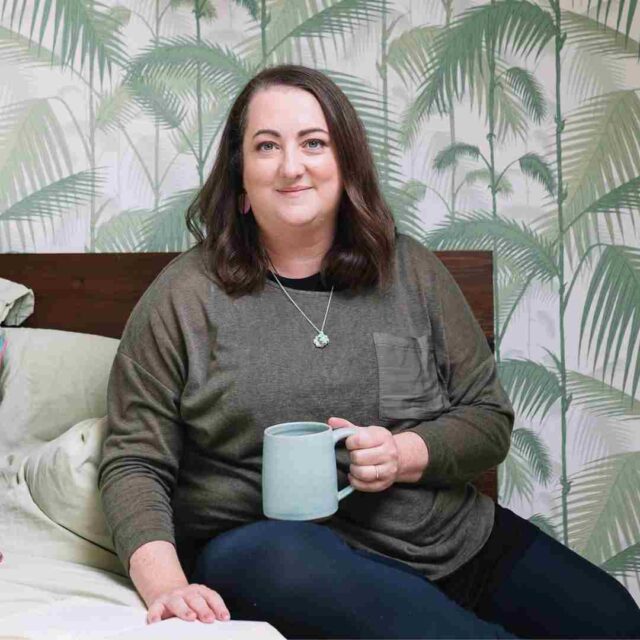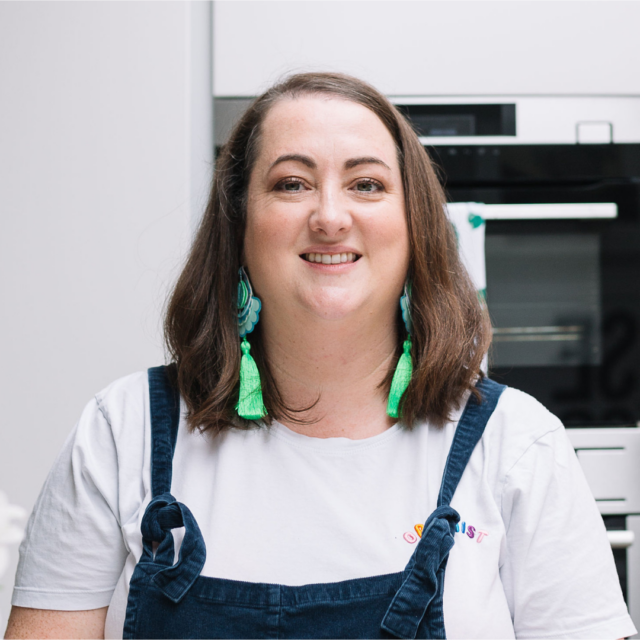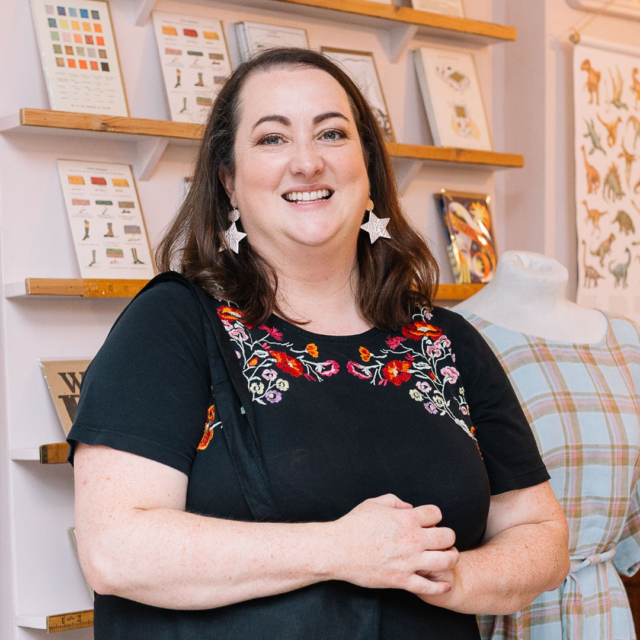Mastering Retail Profit Margins with Catherine Erdly
Catherine Erdly: Welcome to the Resilient Retail Game Plan. Hi, I’m Catherine Eardley. I’m your host. And before we jump in today, I would love to ask you a huge favor and that is, would you please rate and review the podcast? If you’ve listened, but you’ve never written us a review or left us a rating, then this is your opportunity to help out.
It is so helpful for me as a podcast host to have these ratings reviews. on the various different platforms. So for example, if you’re listening to Apple podcasts, you can write a review and rate the podcast. And if you’re listening to Spotify, you can rate it. You can also rate it in many of the other platforms as well, such as pocket casts.
So do take a moment, see if it’s possible to rate the podcast. It just helps get it out there in front of more people. And of course, if you subscribe or follow, Whatever it is on the platform that you use, then that will also be hugely helpful because you’ll be the first to know about every new episode.
Revisiting a Popular Episode on Pricing
Catherine Erdly: So today’s episode, we’re actually going back in time. I am resharing episode number three of the podcast that I recorded all the way back in 2020 and it is such an important topic and such a popular episode. It’s one of my most listened to episodes that I wanted to reshare it again because I re listened to the whole thing and really it’s.
These are some fundamental principles that haven’t changed and I wanted to share them with you today. It’s all about pricing and healthy profit margins. It’s really fundamental when it comes to creating a cash rich, abundant business.
You don’t want to miss it. Have a listen. And if you want to know what your profit margins look like at the end of this, then check out the show notes for a link to my free margin calculator. Enjoy the show.
Welcome to the Resilient Retail Game Plan, a podcast for anyone wanting to start, grow or scale a profitable creative product business with me, Catherine Erdely. The Resilient Retail Game Plan is a podcast dedicated to one thing, breaking down the concepts and tools that I’ve gathered from 20 years in the retail industry.
and showing you how you can use them in your business. This is the real nuts and bolts of running a successful product business, broken down in an easy, accessible way. This is not a podcast about learning how to make your business look good. It’s the tools and techniques that will make you and your business feel good.
Confidently plan, launch and manage your products and feel in control of your sales numbers and cashflow to help you build a resilient retail business.
Understanding Retail Profit Margins
Catherine Erdly: This episode is all about the importance of having a healthy profit margin. And I’m going to talk you through why they’re so important, how you can look at them and why they can make or break your business.
So let’s start off by talking about why they’re so important. Well, if you think about it as a product based business, there is only one place in your business that money is coming in. And that is the difference between what you buy something for and what you sell it for. So if you think about it, then any other expense that you’ve got in your business, whether that’s paying yourself, whether that’s paying somebody else, covering your dispatch costs, covering the cost of running advertising, for example, or your web hosting or anything else that you can possibly imagine, it all has to be paid for by the difference between what you’re buying your products in for and what you’re selling them for.
And this is the same thing in any retail business. So if you think about a business, the size of Marks and Spencers, for example, Marks and Spencers is an enormous business and it has thousands of staff, hundreds of stores, warehouses, full of stock, fleets of lorries, and all of that, everything that Is in that business has to be covered by their profit the difference between what they’re buying their products for and what they’re selling them for.
Of course they have some additional services such as their cafes and their bank but ultimately Marks and Spencers, and any retail business, is paying for everything in the business by creating that profit every time they make a sale, which is why it’s absolutely critical that you get that number right.
So your intake margin, that is a percentage, a number that indicates what percentage of the selling price is made up of profit. And this is what I would have to report on when I worked in big businesses, I would go to the CFO, chief financial officer every month, and I would have to give them a forecast of what the intake margin looked like it was going to be for the upcoming season.
I would have to report on that every month. I’d have to tell them how that profit margin actually came in. And then I would also have to forecast forward. And when I worked at Coast, which is now unfortunately an administration, I would sit with the CFO and he would actually show me the cashflow models and the impact of changing that profit margin.
So just a less than a percentage drop, just a tiny decrease in that margin would mean hundreds of thousands, if not millions of pounds being wiped off the ultimate profitability of the business. All because the amount of money that we were making every time we made a sale was forecast to decrease. So the business had to work, the buying teams and the merchandising teams had to work really hard to maintain that profit margin where we wanted it to be so that there was enough money coming in to cover all of the other bills in the business.
In the last episode, when I was talking about the changes to the retail industry, you may remember that I talked about legacy retailers and some of the problems that they’re facing. And a lot of them are to do with this profit margin. So going back to some of the statistics that I mentioned, the British retail consortium was saying that pre 2007, that an average retailer would expect to end up with six to 9 percent of their sales as profit since then has dropped to between three and 5%.
And all of the pressures on that profit for those big retailers was coming from problems with their intake margin. So for example, after Brexit happened and the pound dropped, then anything you bought from the far East in dollars was all of a sudden a lot more expensive and therefore that profit margin was being eroded and you can see that if the profit margin gets eroded, the money gets wiped totally off the bottom line and the whole business model just falls over.
Obviously, you’re not at that scale just yet, but your profit margins are like the foundations of your business. So it’s very important that you pay close attention to them. And you’re really fully aware of how much money you’re making. Every time you make a sale. Another way I like to look at it is think about it like a cake.
If you think about you sell an item for 10 pounds and then you think about your case, you get that 10 pounds. And if you’re VAT registered, then you have to cut a two pound slice out of that cake and give that to the government. Then you have to cut a slice out to cover the costs of those products. So if you have a 50 percent product margin, then half of that 10 pound sale is already taken up by the cost of what they call cogs or cost of goods sold. So if the cost of the goods sold was 50%, then that gets taken away. And then you have to cover all of the other expenses in your business from that remaining piece of cake. And if the cuts that you’re making in terms of the profitability, in terms of the cost of the goods sold are too big, then all you get left with a crumbs.
So you want to do everything that you can to number one, be really clear about what your profit margin is. And number two, if it’s not in a great place, then you want to do some work to improve it.
Common Mistakes in Calculating Retail Profit Margins
Catherine Erdly: So what are some of the common mistakes that people make when they are thinking or looking at their profit margin?
Well, I have to say one of the most common mistakes is that people just don’t actually take the time to break down all of the costs associated with one product and calculate what that product margin is. So I would say nine times out of 10, when I’ve worked with a business, who’s having cashflow problems, and we’ve done some digging into their cashflow and into their expenses, into their sales, into their profitability, it’s usually that the profitability isn’t high enough.
So that means that their profit margin percentage is not high enough to sustain all of the other costs that they’ve got going on in the business. And if you don’t do that piece of analysis, sometimes it can be very difficult to actually work out that that’s what’s going on, because what happens is, is that often as a small business owner, you know, maybe how much you pay for your products from the supplier, or maybe, you know, how much your materials cost you if you’re making your products.
But if you’ve not sat down and broken down every single invoice, so that you’re looking at the unit cost for one item and then worked out what your profit margin is. You may miss when there are other elements around how you’re selling that product that are eating into your profit. So for example, one of the most common mistakes is not looking at the amount of money you’re spending on packaging, for example. So you might know how much your product costs are. You might have a vague idea of how much your packaging is costing you, but you’ve never actually added up all of the costs, the costs of the bubble wrap or the cardboard insert, the cost of the box and the postcard that you’re putting in.
You maybe haven’t added in if you are creating a nice branded pouch or a box or something like that to put your products in. If you don’t break all of those costs down and then look at them against how much you’re selling your product for, you may miss where you are actually not making enough money.
So I’m not bringing this up to make you feel inadequate in any way, shape or form. In fact, it is definitely not just small businesses that make these kinds of mistakes. For example, I once worked for a company that sold cushions. And they had been selling these cushions for many years. They’d looked at the profitability based on the cost that they were paying to the supplier, but they’d never properly looked into the detail of how much the shipping was costing them specifically on these cushions.
And with shipping, especially when you are talking about shipping via sea, then a lot of the costs are calculated on volume. So the bigger and bulkier an item, the more expensive it is to ship. So as you can imagine, shipping cushions all the way across the world is actually very expensive. But because they were calculating the shipping with a different department, they weren’t factoring it into their prices.
They missed the fact that they were actually losing money on every cushion that they sold. In other words, they would have been more profitable if they had never bought these cushions at all, simply because the unit cost of shipping was astronomical. So again, it’s not just small businesses that make this kind of mistake, but it just really goes to show how important it is for you to understand all of the elements that go into you getting and then selling your products.
The other big issue that I come across is with handmade products. So people who are either finishing an item by hand. Or perhaps even making it from scratch themselves. And usually the issue there is that people look at the cost of their components and all the elements that go into making up the product, but they forget to look at how much is costing them in terms of their time.
There are two issues with not factoring in your time into the costs for your products. The first one is that if you ever want to scale to, you want to increase the amount that you’re making and perhaps get somebody in to help you with your production or to make some of the products for you, then you’re going to have to pay those people.
And if you’ve not built enough profit into your business, if you’ve not correctly calculated how much it’s costing you, including the amount of money that you’d either have to pay yourself or them, then you’re never going to be able to profitably scale. So it’s well worth doing that exercise now. So you have a really clear understanding of what you’re doing and how you can grow in the future.
The other reason that you need to factor in your time is that quite simply, otherwise, you’re going to be working for free. And quite frankly, that is not sustainable. Most people get excited when they’re starting a new business. They don’t mind the fact that they’re not paying themselves and they’re just putting all the money back into the business for a little while.
But eventually, whether it’s one year in or two years in, It will just become too much for you if you are not actually able to pay yourself and not factoring in your time and not allowing for that to be part of the product calculation is a really quick way for you to build a business that can’t ever sustain you financially.
Calculating Your Profit Margin
Catherine Erdly: So how do you actually go about calculating your profit margin? As I mentioned previously, it’s really all about breaking down your costs so that you can look at everything as if it’s one single product. So for example, let’s say you pay 300 pounds to ship 300 items. So you would divide. 300 pounds by 300.
So you would know that you’re shipping for one item is one pound. You would do the same thing for every single invoice that you receive for the product, whether that’s your packaging or Your shipping duty, anything else that you can think of. This is such an important exercise that there is actually three of my courses within the Resilient Retail Club, Start Your Business, Pricing Your Products, and Grow Your Profits.
Three courses that I include this exercise in because it is so critical for understanding the profitability and the ongoing health, if you like, of your business. So once you’ve done all of this, you’ve broken down all of your costs and included things like your time. And everything else, then you want to work out your profit.
So once you have the profit and I have a calculator again inside the club that helps you do this, a spreadsheet that you can just key everything in. And then it tells you the amount of profit that you’re making. You would then divide that by the retail price times by a hundred to get a percentage. If, for example, you have an item that you sell for 10 and you are not VAT registered.
If the costs associated with that item are 3. Then your profit would be 7, 10 minus your 3 costs. Makes sense, right? And then 7 divided by your retail price, that 10 again, that gives you 0. 7, which times by 100 gives you a percentage of 70%. It sounds like it’s a complicated calculation. But actually, if you think about it, all you’re trying to do is work out again, if we go back to that cake analogy, what percentage of your cake is profit?
I’m going to put that calculation in the show notes so you can have a look at it. It’s kind of a hard thing to listen to somebody spell out for you, but when you have a look at the calculation, what I want you to take away more than anything is that the profit margin percentage is quite simply the percentage of your cake.
That is profit. If you are a business that is vatable, so in other words, you’re registered for VAT, then you have to take off that VAT before you do the calculation. So again, if you have a 12 item, you would divide it by 1. 2 to remove that VAT. Then you would take off your costs. So if you had 3 costs, you take that off the 10 that’s been left after you divide 12 by 1.
- And then again, you have. 70 percent you have 7 out of your 10 as profit, which is a 70 percent margin. So this is an exercise that I would strongly recommend, especially as I said, if you’re struggling with cashflow, I think it’s a great place to start to have a look in your business to do this calculation.
Do this for every item that you have in your range already. Ideally. It’s also a great exercise to do before you bring anything new in. So before you commit to purchase an item, run the numbers, take a look at the profitability so you can work out whether or not it is going to be worth your while.
Considering Profit Margins Across Collections and Sales Channels
Catherine Erdly: So what are some of the other considerations then when it comes to margin?
So yes, you want to look at the individual profit margin for every single item. And as I said, I can’t stress enough how much of a valuable and eye opening exercise this really is. But there may be times when you want to think about a whole collection. So let’s say you’ve got a selection of items and some of them, well maybe one or two, you just simply can’t get the profit margin where you want it to be.
But there are other items that are actually Doing better than you would expect, you’ve got great profit margins. Sometimes you want to think about the average across a whole collection. It’s much better to take a balanced view of a whole collection than to increase prices, for example, on some items that just don’t really warrant price increases just so you can make the number stack up.
The other thing that it’s really, really valuable to look at, and again, I go through this in the grow your profits course inside the resilient retail club is to look at your average profitability over time. So that is a more complicated calculation. First things first, you need to understand how much profit you’re making on every single item that you sell.
And then you can do a piece of analysis looking at how many items you’ve sold, say over a three month time period and work out your average profitability. So for example, if you know that every time you sell a product on average, you’re making 15 pounds profit. That’s a really valuable thing to understand because it can help you in so many different ways from understanding how much money you can really spend on advertising to how much money it’s worth spending on dispatch costs or anything else like that. If you understand the average profitability of your business, it is a real key to understanding and growing your overall profitability.
Something else that is important to get a grip on is how your profit margin changes by your sales channel.
This is really about understanding what your payment charges are or the costs associated with selling in various different places. If you sell on your own website, then this generally will give you the most profit of any selling channel that you could possibly sell on. And the reason for that is you only have to pay the processing costs for something like PayPal or Shopify pay or Stripe or another payment processor, where it’s usually somewhere between two and 5%, depending on what you’re using. But if you are selling on a marketplace, for example, so something like not on the high street, you may be paying 25% commission plus VAT. So you may be paying 30 to 35% of your sale price on selling fees. And so it’s important for you to do this exercise. You don’t have to do it for every single item, but for sure.
Take a look at your best sellers, perhaps your best five or 10 items, and see how those profit margins change according to where you are selling them. And big retailers do this too, but it’s generally a lot more difficult for them to get to grips because they have to factor in All of the different costs associated with selling by the different channels, but it is an exercise that a lot of them do do on a regular basis is understand, if you’re a retailer that sells on your own website that is in concession.
So, in other words, inside department stores, you wholesale items, you sell on other people’s websites. You need to understand. Where you’re making the most money, because in a situation where you’ve got limited stock, for example, you’re going to want to understand where the best place for you is to sell that stock.
So if you don’t know the different profit margins by sales channel, it can be more difficult to make those kinds of decisions. So it doesn’t take a huge amount of work. Once you’ve got all of that information. Plugged in once you’ve done the big job, which is to get all of the different product costs associated with the product broken down into single units.
Then usually you just have to tweak the calculation to work out how much it costs you to actually sell. And it’s also useful to understand if there are products that you can only sell on your own website, for example, because if you sell them or not on the high street, you’d be at a loss. Wholesale is another area where you really want to understand those profit margins.
So wholesale, generally speaking, you’re going to be selling at less than half your retail price. So you need to understand if you are selling any of your products at wholesale, whether or not you’re actually even making any money. Definitely taking the time to do the exercise, to look at your profitability by sales channel is really valuable.
And the final point about other things you might want to consider with your margin is think about your shipping costs. So once you’ve done this piece of analysis, you may find that actually there are some products where free shipping just doesn’t make any sense, or you’re just not making enough money if you’re offering free shipping.
So that’s another reason to break down all of the costs associated with getting your goods to you and then out to your customer. Is you can have a look at when you can and can’t offer free shipping and think about if you need to tweak things, for example, only offer free shipping. If people are purchasing over a certain level or basically just how you can make it work for you.
And it’s very hard to understand how to make it work for you unless you’ve taken the time to break everything down and look at it at a. Product by product level.
What Is A Healthy Profit Margin
Catherine Erdly: Next. I’d like to address a question that I get asked a lot, which is usually as soon as we start talking about margins, someone will say to me, well, what actually is a healthy product margin. How do I know if I’m in the right place? So to look at this, I would suggest that you start off by just analyzing the cost to get the goods to you, the cost of the goods, and the packaging. Put postage and selling fees to one side for a moment because those are kind of additional things that layer onto the end of the Profitability calculation, and they also change.
So your shipping costs, for example, will change depending on whether or not you’re offering free shipping. And obviously your selling costs change depending on which sales channel you’re looking at. So let’s just strip it back to how much the actual products cost you and how much their packaging costs you and talk about those profit margins.
If you are purchasing products from another business, so in other words, you’re buying in as wholesale, you will only really be able to achieve a 50 percent margin. So a 50 percent margin is typically how wholesale pricing is set up. The intention of wholesale pricing, or the way it’s calculated, is to give the final seller, so that’s you, the retailer, around a 50 percent margin.
So if that is your business model to buy small quantities or to buy stock from other businesses. And then sell it on, then 50 percent is what you can expect to make. It’s not really something you can play around with that much in terms of trying to improve it. Instead, your lever, if you like, that you’re going to have to pull in order to improve your profitability is going to be all about trying to really minimize the amount of stock that you’re holding onto at any one time and really make the most of your profitability that way.
So otherwise, if you’re making or creating your products before you add on those shipment and payment fees, then really you want to be making around a 65 to 70 percent profit margin. If you’ve got that 65 to 70 percent profit margin, then that is really an ideal situation for you to be in. And that means that you’ve got enough money in your business to be more flexible, because what does it feel like if you’ve got a healthy margin?
Well, you’ve got space to discount the stock if you need to clear it, because you can do a discount without selling the stock at a loss. You’ve got more money coming in. So you can hire in any help that you might need, whether that’s help with picking and packing or whether that’s help with customer service emails or social media, and you won’t feel as stretched or resentful.
As much as you have to do your pricing in a very logical way. And we’re going to talk a lot more about pricing in another episode. Then you do to a certain extent have to price your products in a way that you feel really excited about selling them. And a really good indicator of if your prices and your profitability is not really in the right place is if you’ve been going for a while and you actually end up feeling resentful when you make a sale, because, you know, the amount of money that is going to be left after everything else has been taken out, it’s just simply not going to be enough to make it worth your while.
So that is a really good indicator that your prices and your profitability needs to be looked at.
And it’s worth mentioning that there are just a couple of exceptions, a couple of times when you actually don’t need to be as focused on the profit margin percentage. That might sound like an odd thing to say after I’ve spent the last 20 minutes convincing you that you need to take a look at this profit margin percentage, but it’s really just a couple of examples.
So the first one is if you have a very high value product, because sometimes if you’re selling something for a couple of hundred pounds, then actually If you are getting a 40% margin, but that’s over a hundred pounds cash value per item, then maybe it’s okay if it’s 40% and not higher. So only you know what is actually worth your while.
You’re better off being able to price it correctly and getting 40% margin, but that being a decent amount of money for your effort than to insist on hitting that 65 to 70% profit margin and it being completely out of most people’s price ranges. The other time that you don’t need to worry too much about the profit margin percentage is when you are first starting out.
I cannot stress this highly enough. You want to keep your purchasing really, really tight when you first launch your business and you’re trying to understand about your customer, what they like, what they don’t like, and how you can even sell your products. The last thing you want to do is get caught up in purchasing hundreds or even thousands of items, just so you can get a better margin, or a better price per unit.
I had a conversation once with a charity, they were launching a website and they decided they were going to buy 5, 000 bike seat covers because that was a really great unit price. And I asked them how many bike seat covers they normally sold. And it turns out they’d never sold any.
So yes, you might get a great unit price if you buy 5, 000 bike seat covers, but if you’ve never sold them before, then you want to buy. One or five or a tiny number. So you can start learning this point. It’s less about trying to get that profit margin, right. And more about minimizing your risk and not tying up too much of your cash in stock, right from the get go.
What To Do If Profit Margins Are Low
Catherine Erdly: Another question that I get asked a lot is what do you do if your profit margins aren’t great? So let’s say you do this piece of analysis, you’re making your products yourself. You’re having the manufactured and it turns out you’re actually only making a 40 percent margin or something like that. So in that case.
There are a few things that you need to have a look at if you’re having the products manufactured for you, you can do what’s called cross costing. So that means if you’re working with one manufacturer and the prices are just really high and really difficult Then you would go to different manufacturers and you would ask them to price out the same product so you could understand if you could look for a better margin somewhere else.
You can also have a really honest conversation with your supplier, especially if it’s someone that you’ve been working with for a while. It’s always worth asking them the question, how can I bring down my costs? What suggestions do you have for improving my profitability and you might be surprised with their answers.
Sometimes they work to a brief and they don’t want to deviate from that brief because that’s how you’ve asked them to create the product. But sometimes it’s worth asking that question and they may come up with ideas. Whether that’s ways of manufacturing that’s that are slightly more cost effective or different processes they can use that cut time out of the manufacturing process and therefore save you money.
So it’s always, always worth asking them the question, how can we improve these costs?
Another thing that you can look at is if there are any elements of the product that you could amend. So, for example, if you’re making the product yourself or having it manufactured. Then what elements could you tweak?
And this is probably one of the most common situations that I think I ever came across in my career in retail head office. And you would usually go something like this. The design team would have an amazing idea. The buying team would go away, talk to a manufacturer, get it manufactured, and then we’d all sit around the table and talk about how it was actually just way too expensive.
Like we couldn’t put it on the shop floor for the amount of money that the manufacturer needed to charge for it. And so the process would begin to figure out how we could actually amend it. In such a way that we could bring it into the target cost price to use an example for clothing. I can’t tell you the number of times that the designers would design an amazing top with beading all over it, and it would come back from the manufacturer looking fantastic.
And then we’d see the cost price and get into a long discussion about, could you space the beading out? What if you took the beading off the back? What if you reduce the beading around the hem or the, or the neckline? And it was this constant process where we were trying to refine the product in order to make it fit within our profitability boundaries.
It’s a really important exercise for you to do because one of the approaches that I hear about setting prices is people say, well, take your cost price and multiply it by four or some other number to set the price that you need to sell it for. However, if you do it that way, you’ll never questioning and challenging yourself and how you can improve the profitability of your products because you’re just accepting your cost price as something that can’t be changed.
But it’s always worth asking yourself, especially if you’re the person making the product, or if it’s being manufactured, especially for you is ask yourself, how can I amend this product to make it more profitable?
Now, the key here is that you have to do it in such a way that it doesn’t harm the essential essence of the product.
So, for example, If you make clothing and it’s all about the incredible fabric that you use, then don’t touch the fabric. But are there cheaper buttons that you could use? Are there different techniques for the construction of the garment that would bring the prices down? It’s the same thing with say a candle.
Let’s say that you are known for your fragrances. So don’t mess with the fragrance, but are there any other elements of the candle that you could tweak in order to bring down prices. And so that is the real key here. If you set your profitability as something that you absolutely have to improve, then you will be forced to be creative and think of ways that you can tweak your product so that it still delights your customer, but also has a great result for you and your business.
Another way that you can think about improving the profitability of your sales, for example, is, as I mentioned earlier, if you have a low margin product, you can try and combine it with a high margin product to overall have a better cost price. So an example would be, let’s say you had a notebook and maybe that’s not hugely profitable by itself because you’re using very high quality paper, but you’ve got a really high margin pen that you can combine to do a bit of a bundle offer. So you’re able to overall improve the profitability of the two things together. So there are lots of different ways that you can be creative with improving your profitability.
If you focus on it as one of the key tasks for your business. Now, notice that I didn’t mention increasing your prices. Generally speaking, people jump to the conclusion that they need to increase their prices if their profitability isn’t where it needs to be. However, if you’ve done your price setting correctly, which I’ll talk about in another episode, then you will have got your products at the correct retail price.
So increasing them isn’t going to help that much. Because people just won’t buy them if they’re just too expensive. So price increases in my mind is one of the last things that you should do to increase your profitability.
Conclusion and Final Thoughts
Catherine Erdly: So in summary, then take the time to review your margins. It will give you so much insight into your business.
Do the exercise of breaking down the costs. and really understand how much money you’re making every time you make a sale and understand how that varies by where you’re selling as well. It’s a really eye opening exercise and one that will definitely help you on the road to better profitability and better cashflow in your business.
There’s a cliche. That is said so many times, which is turnover is vanity and profit is sanity, but it’s real. It’s, it’s a cliche because it’s true because you could sell a thousand items on Instagram, but if you’re not making any money on those items, if you’re only making 50 P or a pound, then it’s just really not worth your while.
Poor margins are like shaky foundations and you want to build your business on solid ground. So it’s well worth your time to dig in and understand what kind of profit margins your business is operating on right now.
Thank you so much for listening. As I mentioned at the beginning, there is a margin calculator that you can check out that will help you work out what your profit margins are for your business.
So go check it out and let me know what you thought of today’s episode. And as I mentioned at the beginning as well, if you can rate and review, follow or subscribe, then it means the absolute world to me and really helps out. I hope you enjoyed the episode and I’ll see you next week.







